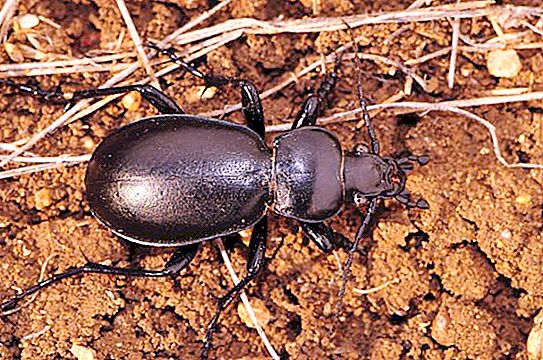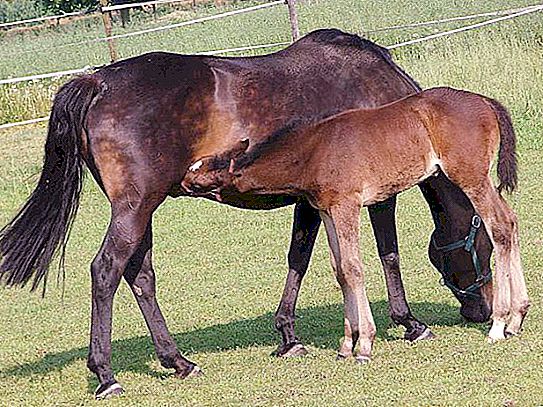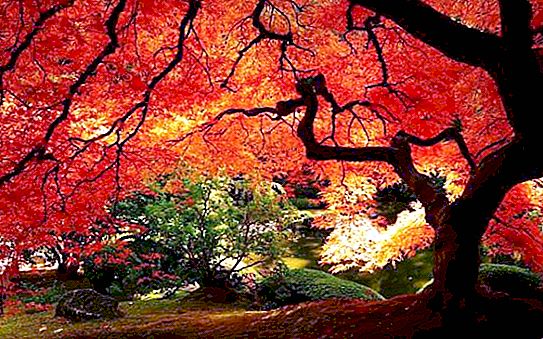The Orenburg region is located on the border areas of various zoogeographic regions and geographical zones. Many factors determined the originality and originality of the local animal world.
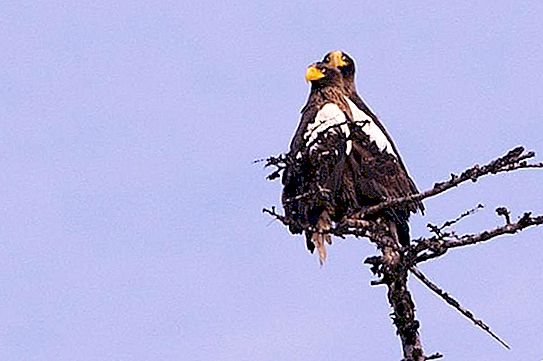
Reserves protected by the state are educational (in the field of ecology), research, scientific, and environmental institutions. The purpose of their activity is to preserve and study the natural movement of natural processes or phenomena. Also in the territories of these zones, the genetic fund of the animal and plant world is replenished, individual communities and species of flora and fauna, unique or typical ecological systems are subject to conservation. The Orenburgsky Nature Reserve is no exception.
general description
The conservation zone is formed by four plots, the total area of which is equal to 21.7 thousand ha.
Orenburg Nature Reserve contains:
- “Talovskaya steppe” - 3200 ha;
- “Burtinsky steppe” - 4500 ha;
- “Aituar steppe” - 6753 ha;
- "Ashchisay steppe" - 7200 hectares.
All zones are located at approximately the same latitude. In longitude they are separated from each other by 240, 380 and 75 km. Such territorial fragmentation made it possible to fully represent the main landscape types found in the steppes of the Orenburg region.
History of creation
The first plans for the organization of the protected area began to be developed in the twenties of the last century. But only in 1975 they began to be realized. The impetus was the study of one of the expeditions, as a result of which a pristine section of the steppe in the Orenburg region was discovered. The reserve was finally created in 1989.
Climate zone
The territory has a continental, dry climate. The average air temperature is 2.5 ° C. The frost-free period in the reserve is 130 days. The average annual rainfall is 390 mm.
Aituar steppe
The territory covers an area of 6753 hectares, it is located on the left bank of the river. Ural, on the border of our country with Kazakhstan. Until the 60s of the last century, two modest Kazakh villages were located on the expanses of this steppe. Steppe and meadow tracts were used as hayfields, but today all types of economic activity are suspended. The only exception was the horse farm specially created on Aituark for the production of high-quality koumiss.
Orenburg Nature Reserve in this area is considered the most mountainous site. This is part of the Ural fold side. The fauna is represented by 38 species of animals. Common hamsters, marmots, common mole rats, mice, and pests are common in this area. Predators are steppe hori, foxes. Roe deer, wild boars, and moose live in shrubs and woods.
106 species of birds are widespread, it is noted that 41 of them nest. Falconiformes, including the steppe kestrel, Saker Falcon, burial ground, Buzzard, steppe harrier, and eagle, are represented in a wide variety. Streptos, partridges, and quail are found in this zone of the reserve. Insects are represented by many species listed in the Red Book of the Russian Federation.
Historical and archaeological sites
There are four solitary mounds and two burial grounds in the reserve. A total of 16 barrows are located near the borders of the site.
Aschisay steppe
This zone is located on areas equal to 7200 ha, which are located in the Svetlinsky district. Previously, the steppe was a pasture with a limited load of cattle, some places were used as hayfields.
The relief of the plot is flat, flat, slightly sloping. The contrasting cliffs, ridges, ridges, which are not subject to the activities of streams and lakes, give a beautiful contrast to the Aschisai steppe.
The hydrographic steppe is represented by hollows and a few lakes, the filling of which depends on the volume of melt spring water. Most of them are rounded. This is one of the most beautiful places the Orenburgsky Nature Reserve is proud of.
What is guarded on this site?
More than 20 species of mammals and 53 species of nesting birds are distributed in the territory. Among the representatives of the fauna (fauna), the most characteristic species are the small gopher, badger, steppe polecat, marmot, and fox. Among birds, it is customary to distinguish belladonna, steppe eagle, lark. On lakes of the steppe nests, herons, bitterns.
Monuments of historical and archaeological value
On the territory of this reserve is a mound, which, according to studies, belongs to the tribes of the late medieval nomads. The height of the monument is 1 m, diameter - 20 m.
Burtinsky steppe
The site is located in the Pre-Ural zone of Orenbug, covering an area of 4500 hectares. During the Soviet era, the steppe was partially exploited as haymaking. The protection zone includes saline and meadow tracts, karst lakes Koskol.
The steppe is located in the eastern part of the marginal trough of the Urals, therefore it is represented by a hilly-bumpy relief. The modern landscape began its formation in the Pliocene in places occupied by the accumulative plain. The main water-separating form has become the Muelde Plateau.
The predominant rocks are represented by continental red-colored polymict conglomerates. The parent rocks are diverse. On steep and sloping slopes there are eluvial deposits of heavy mechanical composition.
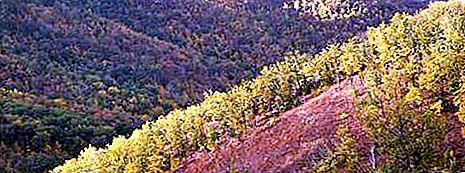
Within the site, ten soil varieties were identified. The basis of the soil cover is chernozems of southern origin. The thickness of the humus horizon reaches about 38 cm, and the content of humus reaches 8%.
The hydrographic network is very developed and is characterized by a constant flow. It is represented by the upper reaches of small rivers, springs, temporary streams. In the protection zone there are two Koskol lakes with karst origin. The water in them is weakly mineralized.
The Orenburg Nature Reserve, where the Kainar spring (in the Burtinsky steppe) is located, is a place of amazing beauty. The source itself is ranked among the main attractions. Its water surface is 15 m². This is a powerful, amazing spring of the voklyuznogo type, not freezing even in winter.
The Burtinsky steppe is considered the standard of the Ural mountainous, hilly landscapes. In the zone, valley-beam, intersyrt-valley, raw-plateau types of terrain are represented.
In the steppe flora, a number of mountain-steppe relicts and edemics were identified, for example, Ural cloves, Helm astragalus, prickly mountain-gill and others.
The Orenburgsky State Nature Reserve in the Burtinsky steppe preserves numerous representatives of the flora and fauna. The fauna is distinguished by a special variety and richness. About 120 species of birds are found in the area, of which 51 species nest. The most characteristic representatives are strept, steppe eagle, demoiselle crane, kestrel, demoiselle, red-footed fox, harrier, black grouse.
Among mammals, 24 species were identified: ground squirrels, groundhogs, hamsters, voles, and pikes. Of the reptiles, one can note the steppe viper and the marsh turtle.
Historical and archaeological sites
On the territory there is a burial mound, which belongs to the Sarmatian culture of the 7th – 3rd centuries. dn e. The monument is located on the plateau of Muelda near the geodetic sign "420.9 m". It is formed by 13 mounds, two of which are especially large and reach a height of 2.5 m and a diameter of 40 m. Other mounds are almost the same: up to 0.8 m in height and 10 to 20 m in diameter.
Talovskaya steppe
The site is located in the Pervomaisky district of the region and covers an area of 3200 hectares. Until 1988, moderate grazing of horses, sheep, and cattle was carried out here. There were also summer camps of sheep, near which pasture degradation of vegetation and soils was revealed.
The relief is characterized by a flat appearance, which was formed mainly in the Mesozoic. The locality acquired a modern type in Quaternary under the influence of denudation processes that caused the rise of the territory.
The parent rocks are typical tertiary saline marine clays. The conservation zone is located on the transition from chernozems to dark chestnut soils. On the gentle slopes and watersheds, medium-sized carbonate soils were able to form.
Orenburg nature reserve in the Talovskaya steppe is characterized by poorly developed hydrography. River networks are represented exclusively by temporary streams. This is the headwaters of the Talovaya and Malaya Sadomna rivers, within the territory they do not have a constant flow. There are also no manifestations of groundwater.
Talovskaya steppe is the standard of the Volga-Ural steppes. The landscape structure of the area is formed by a raw-plateau, slightly wavy interfluve and valley-beam type.
Historical and archaeological sites
On the territory there is a burial mound, supposedly of Sarmatian culture. It can be found on the northwestern border of the site at the level of 198.9 m. This is a unique archaeological value that the Orenburgsky Nature Reserve contains.
Director of Environmental Protection
By order of the Minister of Natural Resources and Ecology of the country on August 19, 2013, Rafilya Talgatovna Bakirova was appointed director of the reserve. This is a major specialist, PhD in Law, coordinator of the UN Steppe Project at the regional level, associate professor, head of the legal department of the local agricultural university, with whom the Orenburgsky Nature Reserve cooperates. Bakirova is sincerely interested in the success of the tasks. Professionalism and inexhaustible energy of activity are inherent in it, therefore the nature protection zone will only flourish.
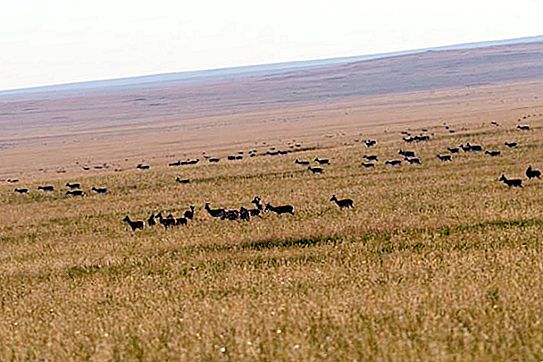
Orenburg State Nature Reserve is in good hands. There is no doubt in the determination and professionalism of the new director. The work carried out in the reserve can be found in the media. They cover the natural processes occurring in the steppe, environmental actions, contests, publishing and advertising. Thanks to this, the reserve attracts a large number of tourists.
Excursion programs
When visiting unique nature conservation sites, people not only get acquainted with the unique ecological situation of protected areas. During the trip, visitors can realize the fragility of its ties, easily destroyed under the influence of man.
Today in the reserve you can walk along four educational and educational excursion routes. This is the "Preserved World" of the Trans-Urals, Trans-Volga, Southern Urals, Cis-Urals.
Animals
The Orenburgsky Nature Reserve has a fauna that is considered typical of the local territory. It is represented by the following types of steppe animals:
- Lun.
- Kestrel.
- Belladonna.
- Shiver.
- Pestle.
- Sleepworm, etc.
The Orenburg Nature Reserve, whose animals and plants are under special protection, also contains numerous species characteristic of the broad-leaved forest zone. This is a mouse, an ordinary hedgehog, badger, lynx, common kestrel, clintukh, black grouse, splyushka, vyakhir. Representatives of semi-deserts also live in the protected area, in particular, the hedgehog, small lark. Sometimes there is a bright representative of the tundra species - a white owl.
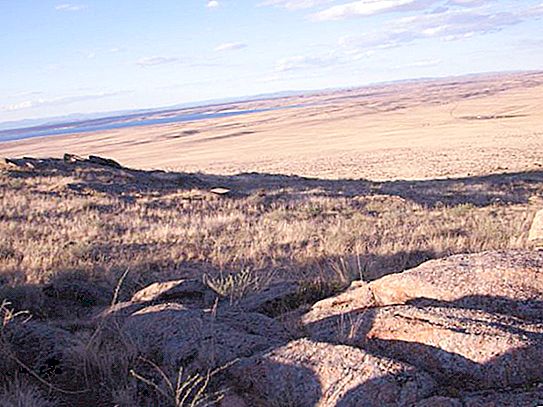
The modern fauna of the territory is relatively diverse and rich. Mammals are represented here - about 48 species, birds - 190 species, reptiles - 7 species, amphibians - 5 species, fish - 6 species, about 1000 species of insects. The Orenburg Nature Reserve, whose photo is presented below, takes care of the entire ecosystem as a whole.
Mammals include seven species of insectivores, 23 - rodents, 3 - bats, 9 - carnivores, 4 - artiodactyls, 2 - rabbit-like. About 15 species of these animals are distributed in all parts of the conservation area. Among them are marmots, ground squirrels, field voles, mice, pestlets, mice, jerboas, fox, wolf, hare, badger, ferret, weasel, corsac.


